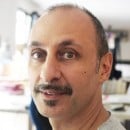“Nature’s my muse and it’s been my passion. As a photographer for National Geographic, I’ve portrayed it for many. But five years ago, I went on a personal journey. I wanted to visualize the story of life. It’s the hardest thing I’ve ever attempted, and there have been plenty of times when I felt like backing out. But there were also revelations. I went down to a remote lagoon in Australia, hoping to see the Earth the way it was three billion years ago, back before the sky turned blue. […] Going down there was like entering a time capsule, and I came out with a different sense of myself in time”.
This is how Frans Lanting’s TED Conference begins, one of the greatest nature photographers of the last few decades. And in fact, his idea is as grandiose as it is fearless: to reconstruct the entire story of life on Earth through photography.
The result of his research is extraordinary in a number of ways.
In just a few minutes, Lanting tells a passionate story, where the beauty of his images, accompanied by the soundtrack of Philip Glass, intertwine with his clear, pure and precise narrative. A scientific story is thus transformed into a work of art.
In a short space in time, Lanting manages to convey a staggering amount of information about nature to the audience, without it ever becoming complicated or boring. His presentation is a clear demonstration of just how passionate science can be when the precision of the explanation is combined with the expressive force of art. Lanting’s presentation is not only a story told through images, but a poetic interpretation of the story of life on our planet:
“Who are we? Brothers of masculine chimps, sisters of feminine bonobos? We are all of them, and more. We’re molded by the same life force. The blood veins in our hands echoed a course of water traces on the Earth. And our brains — our celebrated brains — reflect a drainage of a tidal marsh. Life is a force in its own right. It is a new element. And it has altered the Earth”.
His message is powerful and cannot help but involve us. The Earth is alive and we are a part of it. And his story “is a story about you and me, nature and science”. A story that we can imagine and that can shape where we go next.

